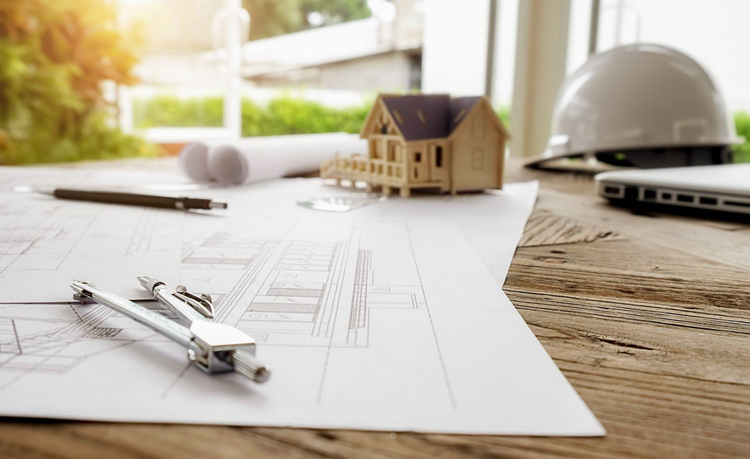Therefore, in this article, we decided to discuss why wood is a building material that must be considered when building a log cabin.
1. Exceptional insulation and energy saving
Probably every person who has a little interest in wooden cabins has also heard about the exceptional properties of wood insulation. They are extremely easy to explain if we compare wood to other materials used in construction, such as steel or masonry. The latter are non-combustible and expand when heated, so the structure of the house built from them can not only significantly weaken, but also collapse. Prefabricated wooden houses have a great advantage in this case – the wood reacts almost opposite to heating. When heated to a flammable temperature, it dries, making wooden constructions even harder. This also assures much lower heat leakage for log houses structures. Considering this fact, it is not surprising that glass transmits heat 23 times faster than wood, marble 90 times faster, and aluminum even 7,000 times faster.
When it comes to building wooden houses, it is often emphasized that the wood expands slightly when the humidity drops below 0%. However, according to experts, this is not a significant factor in the construction of log cabins, because even in the driest climate, the humidity does not fall below 5%.
Therefore, to keep your home not only warmer but also cooler, as well as to keep heating bills from tightening your belts every cold season, wooden structures used for construction are a great alternative to brick, concrete, or stone. By choosing a wooden construction of the house, you will optimize the thermal characteristics of your log cabin to the maximum.
2. Fast construction
It is difficult to object that we hope to enjoy the idea of building our own house as soon as possible since the beginning of house constructions. Therefore, wooden cabins have another great advantage - they can rise on your plot in just a few days.
Compared to bricks, stones, or concrete, easy-to-assemble wooden constructions not only shorten construction time but also save a lot of expenses for work. This feature of log houses is especially relevant when building a house in areas with relatively harsh weather conditions: frequent and heavy rain, snow, or even ice. If under these climatic conditions, normal construction usually has to be stopped, log cabins can be built in practically any weather. This means that planning the construction of wooden houses is much easier than planning constructions of any other type of house.
It is also important to mention that building a log cabin allows easy adaptation of the desired modifications, even during the construction process itself, which is practically impossible in the case of brick or concrete houses. The living space of wooden houses is also optimized due to the small wall thickness – choosing wood as a building material usually results in 8% more living space than in concrete blockhouses.
3. Environmental friendliness
As the topic of ecology gaining great importance in today's society, it becomes no less important in the construction sector as well. The fact that wooden houses are sustainable, renewable, and environmentally friendly has probably been heard many times over, but did you know that wooden structures also absorb and store atmospheric CO2? Did you hear that wood, even in terms of transport, is carbon neutral?
Research shows that using a cubic meter of wood instead of other materials saves 0.8 tonnes of carbon dioxide. It is not difficult to calculate that if 20 cubic meters of wood are used to build a log cabin, 16 tons of carbon dioxide is saved in total. To make it easier to imagine the environmental damage of a non-wooden house of the same size, it is worth noting that 16 tonnes of coal are also generated after about 90,000 kilometers of driving. Thus, as the examples above show, the use of wood in construction, both for structures and the whole frame, certainly has a positive impact on climate change.
When choosing wood for the construction of your wooden house, you can also have a significant impact on the ecology, because in that case, you can find out where the construction wood will come from. Most Western countries already have legislation requiring at least one tree to be planted for each tree cut, as this is the only way to ensure carbon sequestration on the planet. Mature trees use less carbon than younger, faster-growing trees, so combating older trees, using them in construction, and replacing them with new carbon-absorbing trees can be beneficial in combating climate change. Wood technology also makes it possible to carry out pre-production of the house off-site, which in itself reduces not only the construction time but also the amount of waste.
For your log cabins to be truly ecological, it is worth noting to take care not only of ecological materials for the construction of the house, but also not to forget the friendliness of nature in creating the interior and interior of the house itself. Preference should be given to raw materials or minimally processed materials such as wood fiber or wool for interior decoration and interior, as well as to wooden furniture.
4. Versatility
Compared to most building materials, due to its diversity, wood allows you to create a different style of interior depending on the future use of the premises. Some trees are ideal for maximum insulation, some for acoustics, structural frames, walls, floors, ceilings, and even furniture. In addition, wood is compatible with many other materials, which allows the style of the house to be adapted to the architecture of the region, which is characterized by brick, stone, concrete, or even siding. Thus, wooden houses can be both rustic and ultra-modern.
When it comes to the processing of wood, other building materials are really hard to beat. Not only because the wood is easy to maintain and repair, but it can also be painted in any color, waxed and varnished, which allows you to highlight the natural properties of the material.
Another fact is that, when it comes to appearance and durability, wood does not rust. Although it may oxidize in some form, this possibility is statistically insignificant when comparing wood to metal. This itself allows you to keep the great look of log cabins longer. Some metals do also not rust, but they are much more expensive, even considering the extremely frequent renewal of the protective layer of wood by professional means.
5. Mechanical properties and durability
One of the many reasons why wood is still in use today, despite great advances in engineering, is its durability and safety.
In particular, unlike in the case of a brick house, a wooden house sliding on the foundations can slide along with them rather than crack. In the case of other types of homes, even the slightest displacement of the foundation can cause cracks, which usually result in much bigger problems than just a bad look.
Secondly, it is worth mentioning the exceptionally high tensile strength of wood. For example, if we divide the tensile strength by gravity, the figure below will show the “breaking length” of the material (the point at which the material breaks from its weight). In this case, the shorter the distance, the faster the material breaks. Thus, the breaking point of steel used in construction is 5.4 km, and that of hardened arc steel is 17.5 km when the breaking length of spruce wood is 19.8 km. It is now likely to become clear why laminate wood is used for gym floors rather than other building materials.
Third, although wood is up to 7 times lighter than concrete with the same construction, lightness is by no means fragile. Wood is a much more durable material than we often imagine, which is why it is still used to build homes in countries like the Nordic countries or Canada, where the climate can be quite harsh.
6. Water and fire resistance
While it is conceivable that log cabins that often come in contact with water will eventually soak and swell, safety measures should not be forgotten. While many types of unprotected wood soak and swell when in direct contact with moisture, some of them are also highly water-resistant. A study of the degree of absorption of four different types of wood - western red cedar, blackthorn, western hemlock, and Sitka spruce – showed that the moisture absorption of a cedar remained minimal after proper treatment, ranging from 9 to 11% after one year. The humidity of other, as well as processed wood species, ranged between 14-21%.
To ensure that prefabricated wooden houses are protected not only from rainfall but also from other harmful environmental factors, you must take care of high-quality wood protection measures. Only by using long-term protection against UV rays, water and powerful fungicides and quality paint will ensure that the wooden house will look good for a long time. Initially, the wood of the cottage usually needs to be treated with special tools every year, then it is enough to renew the protection every few years, depending on how many layers you have covered and what tools you have used. Usually, the side of the cottage that is more often exposed to sunlight will need to be covered with protective equipment or a more frequent layer. When it comes to paints for a wooden house, there are several types to choose from, depending on your preferences and budget. They can be made based on both oil and water. Please note that both paint and all products intended to protect a wooden house must only be applied on completely dry wood. In some cases, it is even recommended to wipe the wood with a damp cloth or even sand the old protective equipment with a new layer before coating it with special tools or paint.
It is also important to mention that if the wood is also chosen for the interior decoration of a room, it also helps to regulate the humidity inside the room. This feature is especially helpful for people with respiratory problems or other breathing problems. For these reasons, wood is also considered a healthier material than metal, plastic, or other materials used to decorate a wooden house.
Finally, although wood is a combustible material in itself and a significant number of people still avoid it due to the higher risk of fire, this is not a fact-based theory. Wooden houses are not more flammable than other types of houses, paradoxically, they even have excellent fire resistance properties. The thermal conductivity of a house built of wood is as much as 10 times lower than that of concrete, and wood that is well maintained during a fire retains its mechanical properties and strength longer than other materials used in construction. Therefore, in case of a fire, building a log cabin has a lower risk of collapse.





